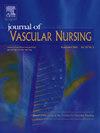评估提供者对有症状的PAD患者的监督运动治疗方案的支持:一个质量改进项目。
IF 1.1
Q3 NURSING
引用次数: 0
摘要
背景:外周动脉疾病(PAD)在美国影响了超过800万人,许多被诊断为PAD的患者没有接受有监督的运动治疗,而在综合循证护理计划中,运动治疗被认为是一线治疗。缺乏循证治疗可导致功能状态下降、活动受限、生活质量差,并导致有症状的外周动脉疾病患者的医疗费用不断上升。问题:北卡罗来纳东部一家私人心脏病学团体诊所的医生对有症状的PAD患者目前的治疗实践进行了分析,发现他们的PAD患者没有规定监督运动疗法(SET)。缺乏循证指南指导的SET方案,同时没有操作血管健康计划,导致对诊断为症状性PAD的患者的治疗发生变化。这些差异会影响护理质量和PAD患者的预后。本质量改进项目的主要目的是评估提供者在将循证SET方案应用于有症状的PAD患者的当前治疗实践中的支持。这一质量改进举措与其他临床场所相关,因为它可以进一步确定通过患者协议(如SET)的正式评估工具获得提供者支持的作用,以增加需要医疗保健服务的患者的可用性、可及性和转诊。方法:实施了一项质量改进计划,以确定北卡罗莱纳东部一家私人心脏病学团体诊所的从业人员是否支持将循证SET方案纳入他们目前对有症状的PAD患者的治疗实践。通过利用最佳的经验证据,制定了SET的方案。然后由私人心脏病学小组从业者使用研究和评估指南评估II (AGREE II)工具对SET方案进行评估。结果:心脏病学从业人员对AGREE II工具的使用表明,在所有六个领域中,基于证据的SET协议质量评级得分均大于70%。所有提供者使用AGREE II仪器支持推荐的SET协议(n = 5, 100%)。结论:提供者支持采用SET方案的成功是心脏病学从业人员对证据的评估和减少有症状的PAD患者当前治疗实践差异的愿景的结果。需要在不同的医疗保健系统中进行更多的调查,以进一步评估提供者对SET方案的支持,以进一步减少有症状的PAD患者治疗的差异。本文章由计算机程序翻译,如有差异,请以英文原文为准。
Evaluation of provider support for a supervised exercise therapy protocol in patients with symptomatic PAD: A quality improvement project
Background
Peripheral artery disease (PAD) affects more than 8 million individuals in the United States and many patients diagnosed with PAD are not receiving supervised exercise therapy which considered first line therapy in a program of comprehensive evidence-based care. This lack of evidence-based therapy can lead to reduced functional status, limited mobility, poor quality of life, and contribute to escalating healthcare costs in the population of patients with symptomatic peripheral artery disease.
Problem
An analysis conducted on the current treatment practices for patients with symptomatic PAD by practitioners at a private cardiology group practice in Eastern North Carolina revealed that supervised exercise therapy (SET) was not prescribed for their population of patients with PAD. The absence of an evidence-based guideline-directed SET protocol partnered with no operating vascular wellness program created variations in the treatment of patients diagnosed with symptomatic PAD. These variations can impact the quality of care delivery and outcomes of individuals diagnosed with PAD. The main purpose of this quality improvement project was to evaluate provider support in adopting an evidence-based SET protocol into current treatment practices of individuals with symptomatic PAD. This quality improvement initiative is relevant to other clinical venues as it may further define the role of gaining provider support through formal evaluative instruments of patient protocols such as SET to increase availability, access, and referrals of patients needing healthcare services.
Methods
A quality improvement initiative was implemented to determine if the practitioners in a private cardiology group practice in Eastern North Carolina would support the adoption of an evidence-based SET protocol into their current treatment practices for individuals with symptomatic PAD. Through the utilization of the best empirical evidence, a protocol for SET was developed. The SET protocol was then appraised by the private cardiology group practitioners using the Appraisal of Guidelines for Research and Evaluation II (AGREE II) tool.
Results
The utilization of the AGREE II tool by the cardiology practitioners demonstrated that the evidence-based SET protocol quality rating scores in all six domains were greater than seventy percent. All providers supported the recommended SET protocol using the AGREE II instrument (n = 5, 100%).
Conclusion
Success in provider support for the adoption of a SET protocol was the result of cardiology practitioners' appraisal of the evidence and vision to reduce the variation in current treatment practices of patients with symptomatic PAD. More investigation is needed across various healthcare systems to further evaluate provider support of SET protocols to further reduce variation in the treatment of patients with symptomatic PAD.
求助全文
通过发布文献求助,成功后即可免费获取论文全文。
去求助
来源期刊

Journal of Vascular Nursing
NURSING-
CiteScore
1.40
自引率
0.00%
发文量
33
期刊介绍:
Journal of Vascular Nursing provides clinical information regarding aortic and peripheral aneurysms, upper and lower extremity arterial disease, acute and chronic venous disease, and more. Original, peer-reviewed articles present descriptions, etiologies, diagnostic procedures, medical and surgical treatment and nursing implications of vascular system disorders.
 求助内容:
求助内容: 应助结果提醒方式:
应助结果提醒方式:


